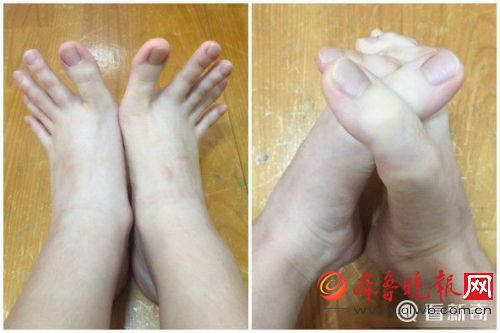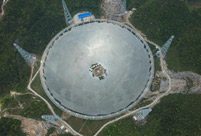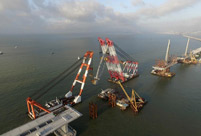

SEOUL, July 8 -- Military authorities of South Koreaand the United Statessaid Friday that they have decided to deploy an advanced U.S. missile defense system, called Terminal High Altitude Area Defense (THAAD), in the U.S. Forces Korea (USFK) stationed on the Korean peninsula.
Seoul and Washington said in a joint statement that the Democratic People's Republic of Korea (DPRK)'s nuclear tests and many ballistic missile test-launches, including the recent intermediate-range ballistic missile firing, pose a serious threat to security and stability in South Korea and the entire Asia-Pacific region.
South Korea and the U.S. have continued consultations since February on whether to deploy the THAAD system in the USFK to enhance the missile defense posture of the South Korea-U.S. alliance in response to the DPRK threats, the joint statement said.
The statement said that the two allies decided to deploy the THAAD in the USFK as part of defense measures to defend the military forces of the South Korea-U.S. alliance and protect the safety of South Korea and its people from the DPRK's nuclear threats, weapons of mass destruction and ballistic missiles.
The joint working-group talks of the two countries over the past several months have reviewed and confirmed the military effectiveness of the THAAD on the Korean peninsula, and the working groups are in a final preparation to propose to defense ministers of the two countries the optimal site for the THAAD deployment in terms of the effectiveness, environment, health and safety, according to the statement.
If the THAAD is deployed on the Korean peninsula, it will not target any other third country but will be operated only in response to the DPRK's nuclear and missile threats, the statement said.
However, South Korea's neighboring countries including China and Russiahave repeatedly voiced serious concerns over the deployment of THAAD on the Korean peninsula as its radar can locate missiles far beyond the DPRK territory.
 Girl goes viral for finger-long toes
Girl goes viral for finger-long toes Five made-in-China hi-tech breakthroughs
Five made-in-China hi-tech breakthroughs HK-Zhuhai-Macao Bridge to open to traffic
HK-Zhuhai-Macao Bridge to open to traffic China opens its first combined transport service to Nepal
China opens its first combined transport service to Nepal Students take stylish bikini graduations photos
Students take stylish bikini graduations photos Charming dancing students pose for graduation photos
Charming dancing students pose for graduation photos Guizhou, Yunnan section of Shanghai-Kunming railway connected
Guizhou, Yunnan section of Shanghai-Kunming railway connected Naked models transformed into landscapes, birds and even DRAGONS by body painting artist
Naked models transformed into landscapes, birds and even DRAGONS by body painting artist World’s biggest cruise ship Harmony of the Seas to start maiden voyage
World’s biggest cruise ship Harmony of the Seas to start maiden voyage Top 20 hottest women in the world in 2014
Top 20 hottest women in the world in 2014 Top 10 hardest languages to learn
Top 10 hardest languages to learn 10 Chinese female stars with most beautiful faces
10 Chinese female stars with most beautiful faces China’s Top 10 Unique Bridges, Highways and Roads
China’s Top 10 Unique Bridges, Highways and Roads Can Duterte decide Manila’s China policy?
Can Duterte decide Manila’s China policy? Heroic rescue operations in flooded areas
Heroic rescue operations in flooded areas A draft amendment triggers off worries about surge of Islamic extremism
A draft amendment triggers off worries about surge of Islamic extremism Travel packages from China to South America swell tenfold as the 2016 Rio de Janeiro Olympic Games draws near
Travel packages from China to South America swell tenfold as the 2016 Rio de Janeiro Olympic Games draws nearDay|Week